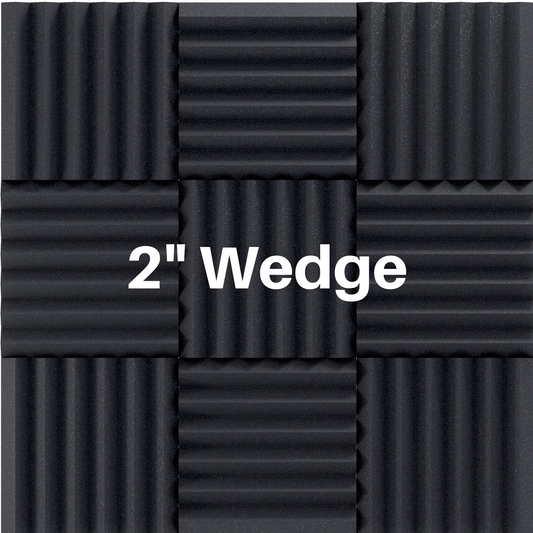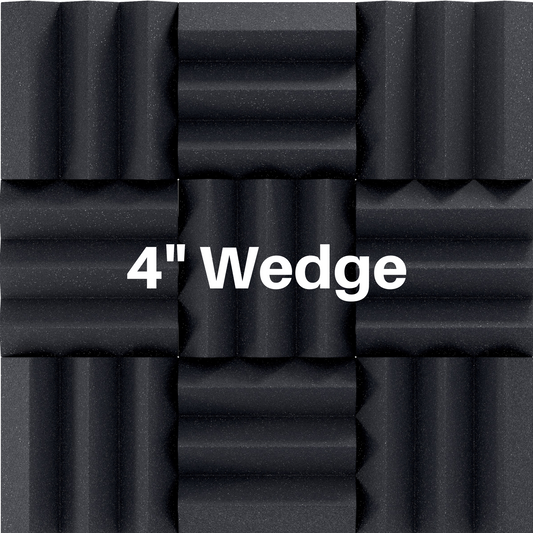Soundproofing Foam For Music Studios - Simple Recording Tip
Share
Acoustic foam enhances sound clarity in a room by absorbing noises from the low to the high end of the spectrum. Foam panels are used in studios worldwide to control the sonic character rooms with various characteristics. Studio foam will not completely soundproof an area, but it will do a great job decreasing echoes, reverberations and other unwanted noises. We will discover why sound absorption treatment is imperative and how to use acoustic panels to help get professional sounding recordings at home or in your studio.
Sound originates at the sound source and travels through the air until it loses its energy or comes in contact with a boundary or surface. Once it reaches the surface the sound wave energy is either reflected, absorbed, or a combination of the two. One of the most important characteristics of sound waves is their capacity to bounce or reflect off a surface just as light reflects off of a mirror. Hard surfaces like drywall and concrete tend to reflect sound energy while an acoustic foam surface will absorb the energy.
Acoustic foam can be the difference between a good recording and a bad one. If your room has reflective surfaces you will experience echoes due to sound waves bouncing off the walls. This will cause your microphone to pick up echoes and reverberations making your recording very noisy and unappealing. This can be really bad if you have parallel opposing walls as these conditions can cause an acoustic phenomena called “standing waves”. An affordable and practical way to avoid these issues is by using sound absorbing technology like studio foam.
Full coverage is recommended for vocal booths or isolation booths, but other areas can be spot treated. When spot treating a room the foam panels are generally placed at the reflection points and/or in the corners of the room. If you have monitors, amps or any other speakers you can find the reflection point fairly easily. Think of it like the speaker is aiming at the acoustic foam. Start by spot treating a few areas with foam to see if you get the desired results. You can always add more if needed.
Our foam panels are designed for optimum sound absorption. The tiles are cut in a wedge style angled design which will absorb much more sound energy than a flat acoustic foam surface. Our bass traps are perfect for corners and behind subwoofers. The acoustic tiles are ideal for spot treating or full coverage.
The thickness of acoustic foam should also be taken into consideration. 1 inch and 2 inch thick panels are great for absorbing high end frequencies while thicker 3 and 4 inch foam, and bass traps are preferred for absorbing low end acoustic noise and bass tones.
Every room has different sonic characteristics so there is not one single formula for treating a room. Please contact us if you have any questions about your room. We are happy to help!
SHOP Acoustic Foam!







